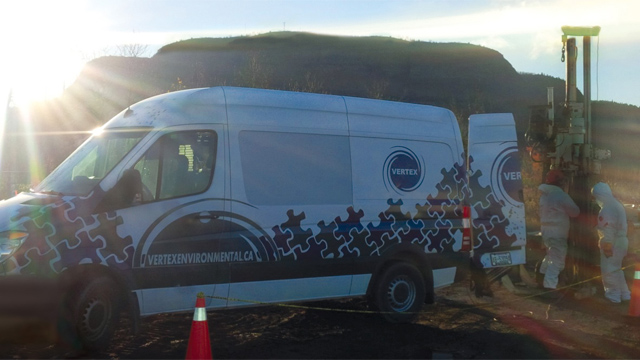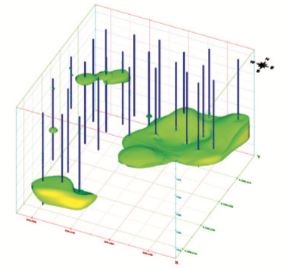
Overview
 An historic depot located in Northern Ontario was used for transferring chemicals from bulk storage to trucks for distribution. An extensive monitoring well installation and vapour probe survey was completed. Downgradient groundwater monitoring wells with significant concentrations of chlorinated solvents were discovered to be leaching into an adjacent surface water body. Not knowing where the source was located on-site became a major obstacle to delineation. The membrane interface probe (MIP) was selected as a cost-effective approach to delineation, both horizontally and vertically.
An historic depot located in Northern Ontario was used for transferring chemicals from bulk storage to trucks for distribution. An extensive monitoring well installation and vapour probe survey was completed. Downgradient groundwater monitoring wells with significant concentrations of chlorinated solvents were discovered to be leaching into an adjacent surface water body. Not knowing where the source was located on-site became a major obstacle to delineation. The membrane interface probe (MIP) was selected as a cost-effective approach to delineation, both horizontally and vertically.
Scope of Work
Vertex mobilized high resolution site characterization tools to the site for rapid in-situ delineation. The MIP was deployed to delineate the horizontal and vertical extents of the dissolved-phase impacts of the trichloroethylene (TCE) plume. The MIP was able to determine that the bulk of the TCE plume was located just above and within a native clay layer. The MIP was able to rapidly and efficiently delineate the TCE plume and identified areas where the dissolved phase impacts were not expected on-Site.
The Vertex Approach
High resolution site characterization was deployed by Vertex for nine days to delineate TCE impacts in the subsurface. Without the added data from the high resolution site characterization survey many impacted zones and depths would likely have gone undiscovered. The results from the MIP survey also revealed zones and depths of impacted groundwater that were not known or expected before the survey was initiated. The added data from the MIP survey was taken into account for a future remediation program.

